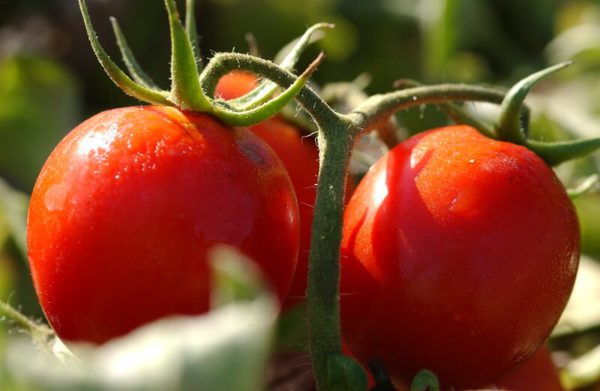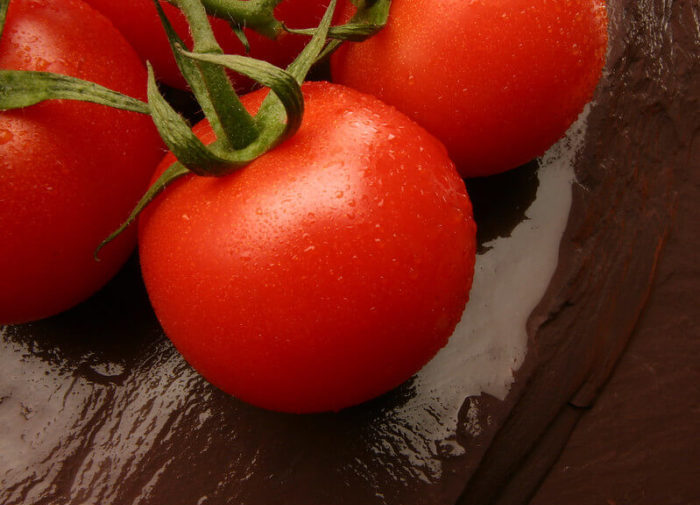A Green Thumb’s Guide to Planting Tomatoes in Missouri
Every gardening enthusiast knows that nothing beats the taste of a sun-ripened, juicy tomato 🍅 picked straight from the vine. Whether you’re a seasoned gardener or a beginner looking to try your hand at growing your own tomatoes, Missouri offers an ideal climate for nurturing these delicious fruits. This comprehensive guide will walk you through everything you need to know about planting tomatoes in Missouri, from selecting the right variety to tips on how to care for your plants throughout the season.
Selecting the Right Tomato Variety for Missouri
Missouri’s climate, with its hot summers and mild winters, is well-suited to growing a wide variety of tomato plants. When choosing the best variety for your garden, consider factors such as your personal taste preferences, available space, and desired level of maintenance.
- Determinate vs. Indeterminate Tomatoes: Missouri gardeners have the option of planting either determinate or indeterminate tomato varieties. Determinate tomatoes, also known as bush tomatoes, grow to a fixed size and produce their fruit all at once, making them perfect for small gardens or container planting. Indeterminate tomatoes, on the other hand, continue to grow and produce fruit throughout the season. These vining plants require more space and support but can provide a steady supply of tomatoes all summer long.
- Heirloom vs. Hybrid Tomatoes: Heirloom tomatoes are traditional varieties that have been passed down through generations, prized for their unique flavors and often stunning colors. Hybrid tomatoes are modern varieties bred for specific traits, such as disease resistance, high yield, or uniform size. Both types can be successfully grown in Missouri, so the choice ultimately comes down to personal preference.
- Popular Missouri Tomato Varieties: Some well-loved tomato varieties that thrive in Missouri include ‘Better Boy,’ ‘Brandywine,’ ‘Celebrity,’ ‘Cherokee Purple,’ ‘Early Girl,’ and ‘Roma.’ These varieties offer a mix of flavors, colors, and sizes, ensuring there’s a perfect tomato for every gardener.
Preparing Your Garden for Planting
Once you’ve selected the tomato varieties you’d like to grow, it’s time to prepare your garden for planting. Proper soil preparation, choosing the right location, and ensuring adequate sunlight will go a long way in ensuring a bountiful harvest.
- Soil Preparation: Tomatoes prefer well-draining, fertile soil with a pH between 6.0 and 6.8. Begin by testing your soil’s pH to determine if any amendments are necessary. If your soil is too acidic, adding lime can help raise the pH, while sulfur can lower the pH of alkaline soil. Additionally, incorporating organic matter like compost or well-rotted manure can improve soil fertility and structure.
- Choosing the Right Location: Select a spot in your garden that receives at least six hours of direct sunlight each day. Tomatoes need plenty of light to grow and produce fruit. Ensure that your chosen location also has good air circulation to help prevent disease.
- Spacing and Support: Proper spacing and support are essential for healthy tomato plants. Indeterminate varieties require 24 to 36 inches of space between plants and should be supported with sturdy stakes, cages, or trellises. Determinate varieties can be planted 18 to 24 inches apart and may only need minimal support.

Planting Your Tomato Seedlings
Once your garden is prepared, it’s time to plant your tomato seedlings. Follow these steps to give your plants the best start possible:
- Timing: In Missouri, the best time to plant tomatoes is after the last frost date, typically between late April and early May. You can check local frost date information to determine the ideal planting time for your area. If you’re starting tomatoes from seeds indoors, begin six to eight weeks before the last frost date.
- Hardening Off: Before planting your tomato seedlings outdoors, it’s essential to acclimate them to outdoor conditions. This process, called “hardening off,” involves gradually exposing seedlings to sunlight, wind, and temperature fluctuations over a period of 7-10 days. Begin by placing your seedlings in a sheltered spot outside for a few hours each day, gradually increasing the amount of time and sunlight exposure.
- Planting: To plant your tomato seedlings, dig a hole deep enough to accommodate the root ball and part of the stem. Burying the stem up to the first set of leaves encourages the development of a strong root system, which is crucial for a healthy, productive plant. Space the seedlings according to the recommendations for your chosen variety.
- Watering: After planting, water your seedlings thoroughly to help establish the roots in their new environment. Tomatoes require consistent moisture, so aim to provide 1-2 inches of water per week, either through rainfall or suplemental watering.
Caring for Your Tomato Plants Throughout the Season
To ensure a bountiful harvest, it’s crucial to provide your tomato plants 🍅 with proper care throughout the growing season. This includes consistent watering, regular feeding, and diligent pest and disease management.
- Watering: Tomatoes require consistent moisture to grow and produce fruit. Inconsistent watering can lead to problems such as blossom end rot or cracked fruit. Water your tomato plants deeply, aiming for the soil at the base of the plant rather than the leaves to reduce the risk of disease. Consider using a soaker hose or drip irrigation system to maintain consistent moisture levels. 🌊
- Feeding: Tomatoes are heavy feeders and benefit from regular applications of fertilizer. Use a balanced, slow-release granular fertilizer or a liquid fertilizer specifically designed for tomatoes, following the package instructions. Apply the fertilizer every 4-6 weeks throughout the growing season.
- Mulching: Adding a layer of organic mulch, such as straw, grass clippings, or shredded leaves, around your tomato plants can help conserve soil moisture, suppress weeds, and maintain a consistent soil temperature. Avoid using wood chips or bark mulch, as they can deplete nitrogen from the soil.
- Pruning: Regular pruning can improve air circulation, reduce disease risk, and encourage the development of larger, tastier fruit. For indeterminate tomato varieties, remove any suckers (small shoots that grow between the main stem and leaf branches) and trim lower leaves to promote upward growth. Determinate varieties typically require less pruning, but removing any diseased or damaged leaves is still essential.
- Pest and Disease Management: Keep an eye out for common tomato pests, such as aphids, hornworms, and whiteflies. Use organic or chemical controls as needed, following label instructions carefully. To prevent diseases like blight or fusarium wilt, practice crop rotation, maintain proper spacing and air circulation, and avoid overhead watering.
Harvesting Your Tomatoes
The moment every gardener eagerly awaits – the harvest! Knowing when and how to pick your tomatoes ensures the best flavor and texture.
- Harvest Time: Tomatoes are typically ready for harvest when they’ve reached their full color and are slightly soft to the touch. Picking your tomatoes at the peak of ripeness ensures the best flavor and quality.
- How to Harvest: Gently twist the tomato off the vine or use a pair of pruning shears to snip the stem just above the fruit. Be careful not to damage the plant or surrounding fruit.
- Storing and Preserving: Freshly harvested tomatoes can be stored at room temperature for several days. Avoid refrigerating tomatoes, as this can negatively impact their flavor and texture. If you have a surplus of tomatoes, consider preserving them through caning, freezing, or drying to enjoy their delicious taste throughout the year.
Planting tomatoes in Missouri can be a rewarding and delicious experience. By selecting the right variety, preparing your garden, providing proper care throughout the season, and knowing when and how to harvest, you’ll be well on your way to enjoying a bountiful harvest of juicy, homegrown tomatoes. With a little patience, attention, and care, even the most novice gardener can experience the joy of plucking sun-warmed tomatoes straight from the vine. So roll up your sleeves, get your hands dirty, and savor the fruits of your labor in the form of the perfect tomato!!
Missouri Tomato FAQs
Q: When is the best time to plant tomatoes in Missouri?
A: The ideal time to plant tomatoes in Missouri is after the last frost date, which typically falls between late April and early May. Check your local frost date information to determine the best planting time for your area.
Q: What are some popular tomato varieties that thrive in Missouri?
A: Popular tomato varieties for Missouri gardens include ‘Better Boy,’ ‘Brandywine,’ ‘Celebrity,’ ‘Cherokee Purple,’ ‘Early Girl,’ and ‘Roma.’ These varieties offer a range of flavors, colors, and sizes to suit various garden preferences.
Q: How much sunlight do tomato plants need?
A: Tomato plants require at least six hours of direct sunlight each day to grow and produce fruit. Choose a location in your garden that receives ample sunlight and has good air circulation to help prevent disease.
Q: How often should I water my tomato plants?
A: Tomatoes need consistent moisture, so aim to provide 1-2 inches of water per week, either through rainfall or supplemental watering. Water your plants deeply, focusing on the soil at the base of the plant to reduce the risk of disease.
Q: How can I prevent common tomato pests and diseases?
A: To prevent pests and diseases, practice crop rotation, maintain proper spacing and air circulation, and avoid overhead watering. Monitor your plants for signs of pests like aphids, hornworms, and whiteflies, and use organic or chemical controls as needed, following label instructions carefully.
Q: When and how should I harvest my tomatoes?
A: Tomatoes are ready for harvest when they’ve reached their full color and are slightly soft to the touch. Gently twist the tomato off the vine or use pruning shears to snip the stem just above the fruit, being careful not to damage the plant or surounding fruit.








